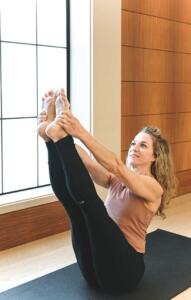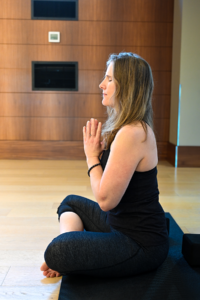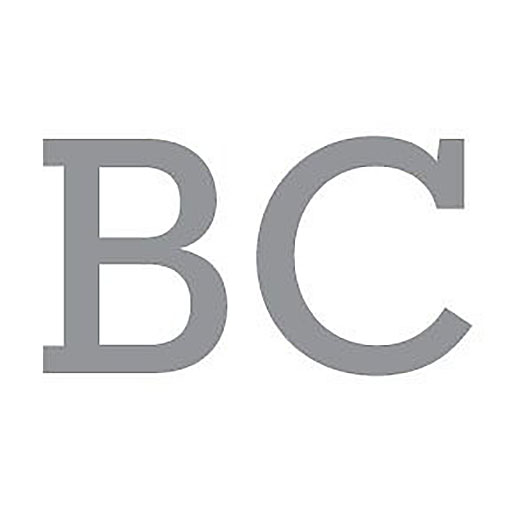The Yin and Yang of Yoga
Heather Balajadia
Years of experience: 25
How does yoga aid in the body’s natural detoxifying processes?
1. Yoga is movement; all movement assists lymphatic circulation. Your lymphatic system is a network of tissues and organs that helps rid the body of toxins and waste. It flows upward against gravity and is powered by movement and breathing.

2. A big emphasis in yoga is the breath. Seventy percent of toxins are released through the breath. The practice of yoga involves coordinating movement with breath, practicing different breathing techniques, and simply using breath awareness as a meditation and calming technique.
3. The body eliminates toxins through sweating—yoga is a great way to work up a sweat to purge toxins through the skin.
4. We have organs of detoxification and elimination—namely the kidneys, liver and digestive tract—and we can use yoga poses to target not only these organs but also the meridian pathways that pertain to these organs.
What are the four pillars of yoga you use to aid in the detoxification process?
1. Breathwork exer
cises: Breathwork, or pranayama, has been studied for its benefits on the nervous system and cardiovascular and respiratory systems. It’s been shown to reduce stress, improve concentration and strengthen the immune system.
Nasal beathing increases nitric oxide (NO), which helps cells take in more oxygen, widens blood vessels and rids the body of CO2 and other toxins.
Diaphragmatic breathing, which increases lung capacity, calms the nervous system and helps stimulate the lymph nodes that reside in the gut. Kapalabhati, or breath of fire, is a vigorous breath practice that opens the sinuses, supplies the brain with fresh blood, and tones the diaphragm and abdominal muscles and organs.
Bhramari, or “humming bee” breath, has been shown to be especially beneficial in calming anxiety and moving stuck energy/emotions through the system.
2. Decompression poses: These postures place a squeeze on the adrenals and kidneys while opening flow to the digestive and abdominal organs.
3. Compression poses: These postures squeeze the abdominal and digestive organs (including the liver) and create space and flow to the kidneys and adrenals.
4. Twisting poses: These poses wring it all out, targeting all the tissues, organs and systems of the body.
How does nutrition work in tandem with the physical poses?
You are what you eat. I’m not a proponent of fad diets or quick fixes; even the term “detox” yoga can come off gimmicky. This program is not meant to be a quick fix in any way, but instead gives you a blueprint for implementing better dietary and lifestyle habits.
My hope is to point out some choices and habits that may be contributing to your toxic load, and to replace those habits with ones that will aid in preventative and long-term health. Food is nourishment and fuel; it’s what provides our amazing bodies the building blocks and energy to perform millions of tasks every day. Adopting a healthy lifestyle is love and self-care.
Rachel “Rai” Lowe
Years of experience: 25
How do yin yoga and meditation work to calm the mind?
Yin yoga encompasses a contemplative quality. Yin yoga and meditation help us slow things down, increase our ability to adapt to challenges and assist in resetting the nervous system (specifically the parasympathetic nervous system). Both teach us how to work with discomforts through body awareness, breathing techniques and focused attention. They help move us toward accepting (rather than rejecting) whatever shows up in our practice and finding ways to do so with compassion.
So in yin yoga, the outcome is not just a physical reward of increased range of motion and a release of tension but also a mental cleansing and revitalization. This allows us to show up off the mat as our best selves in our daily lives, activities and relationships.

What are the four pillars of yin yoga?
1. Breathwork: Gentle and subtle breath practices support a calmer and steadier attention. The breath is a tool used that can help draw our senses inward, so we are less distracted by the external noises of life, providing a clearer space for our practice.
2. Long holds: Yin yoga uses longer-held holds that are closer to the ground. Yin works differently on the body than the more traditional methods of dynamic or muscular stretches in other yoga classes. Yin focuses on the fascia and connective “yin” tissues (whereas muscles are considered “yang”). There is no warming up of the muscles, so the intention is to turn down the volume on the muscular component of stretching
and move toward the slow, static yin changes of the fascia. These changes can aid in increased range of movement, supporting release of fascia adhesions, and teach us that less can indeed be more, if done with the right intention and instruction.
3. Props: Equipment (aka “props”) are used heavily in yin yoga as an invitation to go only where your body is needing on a given day. For some postures you may require more support and others less. The bolsters, blocks and blankets are utilized to provide support and comfort and to adjust the postures to fit our bodies (rather than trying to adjust our bodies to fit into a posture).
4. Mudras: Mudras can be thought of as “hand postures” that bring about a specific focus. They are used delicately, mindfully and at a trained teachers’ discretion. I use mudras sparingly in a class but find they can help some students discover a place in their body to focus their mind on, particularly if their mind is actively pulling them away that day.
Do you have advice for those new to the practice?
Curiosity. Bring a genuine interest for how it feels to slow down and do so without an agenda or expectation. We do so many things in life; therefore, it is vital to give ourselves room to be in a quieter, more peaceful space.


